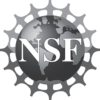 Do you live in Mexico, the United States, or Canada? Then starting tomorrow, you can join in the second International Monarch Monitoring Blitz. From July 28 to August 5, it’s time for #MissionMonarch.
Do you live in Mexico, the United States, or Canada? Then starting tomorrow, you can join in the second International Monarch Monitoring Blitz. From July 28 to August 5, it’s time for #MissionMonarch.
By joining in on the Blitz, you help identify the monarch butterfly’s breeding sites, a task essential to its survival. You can do this by monitoring milkweed and monarch eggs, as well as by taking note of caterpillars, pupae and adults.
Though monarch butterflies can be found all over the world, the monarch butterfly migration and life cycle are a special phenomenon that the three North American countries share. 40,000 years ago, as the climate began to warm, monarchs followed milkweed as it began to grow in successively warmer areas. Every year, a cycle of monarch migration begins, with two populations of migrating monarchs flying from Mexico to Canada and then back again.
From the very beginning, this migration was dependent on milkweed, but depletion of this food source has led the governments of Canada and Mexico to list the monarch butterfly as endangered. When you join #MissionMonarch by sharing your milkweed observations (number of plants examined and whether or not you saw monarchs), you help researchers determine the fine scale distribution of milkweed to protect monarch butterflies and better advocate for preservation of their favorite food and primary habitat.
Every observation is important. Citizen scientists in Canada and the northern United States will shed light on the peak breeding monarch population and the presence of milkweed, while reports from the southern United States and Mexico will document early migration and breeding.
Monarchs and their intricate, migratory life cycle are our shared North American heritage. There has been be an 80% decrease in the monarch population over the last twenty years. By coming together across country borders to document monarch habitats, citizen scientists can play a role in vital research. What are you waiting for? Join #MissionMonarch!
Author’s note: Hi! It’s Caroline here. I’m usually behind the curtain here at SciStarter, but I wanted to briefly note that monarchs are close to my heart. I observed the migration in Mexico when I was a student, and I can vouch that it’s truly amazing. I want future generations to see what I saw, and that’s why I’m joining #MissionMonarch.
Check out more citizen science projects through the SciStarter Project Finder!

